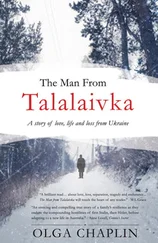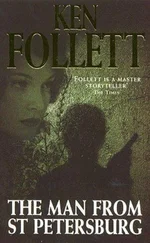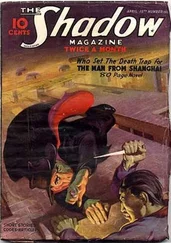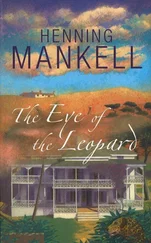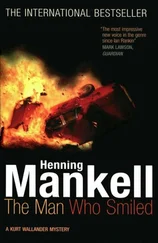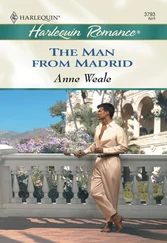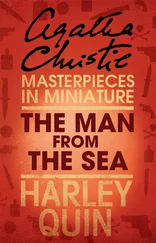She considered phoning police HQ in Hudiksvall and talking to this Erik Huddén. But what would he be able to add? She decided not to. Instead, she started reading more carefully the papers inside the file devoted to her parents. It was many years since she had last opened it. She realised that, in fact, she had never read some of the documents before.
She sorted the contents of the thick file into three piles. The first one comprised the life history of her father, whose body was lying on the seabed in Gävlebukten. The water in the Baltic Sea was so salty that skeletons did not corrode especially quickly. Somewhere in the silt were his bones and cranium. The second pile dealt with the shared life of her mother and father, and she featured in there herself, both before and after she was born. The third pile was the largest and contained papers relevant to Gerda Lööf, her mother, who became an Andrén. She read slowly through everything, especially when she came to the documents referring to the time when her mother had been fostered by the Andrén family. Many of them were faded and difficult to read, despite the fact that she used a magnifying glass.
She slid over a notepad and wrote down names and ages. She herself had been born in the spring of 1949. Her mother was then seventeen, having been born in 1931. She also found the birth dates of August and Brita Andrén: she was born in August 1909, and he in December 1910. So they had been twenty-two and twenty-one respectively when Gerda was born, and under thirty when she came to join them in Hesjövallen.
She found nothing to indicate that Hesjövallen was the place where they lived, but the photograph that she now checked again with the picture in the newspaper convinced her. There could be no mistake.
She started to examine the people standing upright and stiff in the ancient photograph. There were two younger people in it, a man and a woman standing a little to one side of the elderly couple at the centre of the picture. Could they be Brita and August? There was no date, nothing written on the back of the picture. She tried to work out when it might have been taken. What did the clothes indicate? The people in the photograph had obviously dressed up for it, but they were rural people for whom a suit could last for a whole lifetime.
She pushed the photos to one side and turned to the other documents and letters. In 1942 Brita had suffered from some stomach problem and been treated in the hospital in Hudiksvall. Gerda writes her a card and hopes she will soon be better. She is eleven at the time, and her handwriting is awkward. Some words are misspelled, and she has drawn a flower with irregular petals on one side of the card.
Birgitta was quite touched on reading this card and surprised that she hadn’t noticed it before. It had been lying inside another letter. But why had she never opened it? Was it because of the pain she felt when Gerda died, which meant that she didn’t want to touch anything that would remind her of her mother?
She leaned back in her chair and closed her eyes. She had her mother to thank for everything. Gerda didn’t even finish school, but she had always urged her daughter to continue her studies. It’s our turn now, she’d said. Now it’s time for daughters of the working classes to get themselves an education. And that is precisely what Birgitta Roslin had done. During the 1960s, when no longer only middle-class children flocked to universities, it had been only natural for her to join radical left-wing groups. Life was not just a matter of understanding, but also of bringing about change.
She continued working her way methodically through the documents. She discovered another letter. The envelope was pale blue, and postmarked from America. The thin paper was filled with tiny handwriting. She focused the light from her desk lamp and with the aid of the magnifying glass tried to make out what the letter said. It was written in Swedish but contained a lot of English words. Somebody called Gustaf is describing his work as a pig farmer. A child called Emily has just died, and there is ‘stor sorrow’ in the household. He wonders how things are back home in Hälsingland, how the family’s doing, and the harvests and the animals. The letter was dated 19 June 1896. The address on the envelope was August Andrén, Hesjövallen, Sweden. But my maternal foster-grandfather wasn’t even born then, she thought. Presumably the letter must have been addressed to his father, since it had been kept by Gerda’s family. But why had it been passed down to her?
Right at the bottom, under the signature, was an address: Mr Gustaf Andrén, Minneapolis Post Office, Minnesota, United States of America.
She checked her old school atlas again. Minnesota is farming country. So one of the Andrén family in Hesjövallen had emigrated there more than a century ago.
But she found another letter that showed another member of the Andrén family had ended up in different parts of the United States. His name was Jan August, and he evidently worked on the railway that linked the East and West Coasts. His letter asked about relatives, living and dead, though large parts of the letter were illegible. The writing had become blurred.
Jan August’s address was: Reno Post Office, Nevada, United States of America .
She continued reading, but found nothing else in the piles that related to her mother’s connection with the Andrén family.
She put the documents back in the file, returned to the Internet and, without much hope of success, tried to find the postal address in Minneapolis that Gustaf Andrén had given. As expected, she came to a dead end. She tried the address in Nevada and was referred to a link to a newspaper called the Reno Gazette-Journal. Just then the phone rang: it was the travel agency. A friendly young man with a Danish accent ran through all the details of the package holiday with her and described the hotel. She didn’t hesitate. She made a preliminary booking and promised to confirm it the following morning at the latest.
She returned to the computer and called up the Reno Gazette-Journal again. She was just about to move on to another page when she recalled that her search was for Andrén, not merely the postal address. So there must be some reference to that name in a recent issue of the Reno Gazette-Journal. She started reading through the list of articles and subjects, clicking her way from one page to the next.
She gave a start when the relevant page eventually appeared. At first she read it without really grasping its implications. Then she read it again, more slowly, and began to wonder if she could believe her eyes. She stood up and backed away from the computer. But the text and the pictures didn’t disappear.
She printed them out and took them with her to the kitchen. She read everything once more, very slowly.
On January 4th a brutal murder took place in the little town of Ankersville, northeast of Reno. The proprietor of an engineering workshop and his whole family were found dead that morning by a neighbour, who had become suspicious when the workshop didn’t open as usual. The police have no leads as yet. But it is clear that the whole Andrén family — Jack, his wife, Connie, and their two children, Steven and Laura — had been murdered with some kind of knife or sword. There was nothing to indicate robbery or burglary. No obvious motive, the Andrén family was well liked and had no enemies. The police are now looking for a mentally unbalanced perpetrator, or perhaps a desperate drug addict, in connection with these horrific murders.
She sat there motionless. The sound of a rubbish truck drifted up from the street below.
For the first time, she felt fear creeping up on her. As if she were being observed unawares.
Читать дальше

